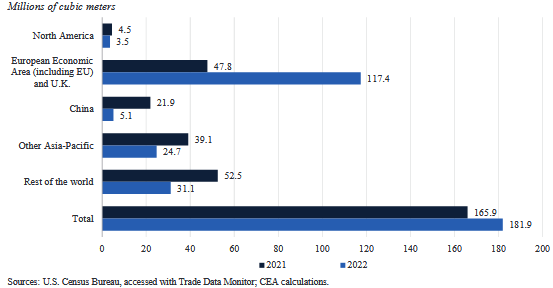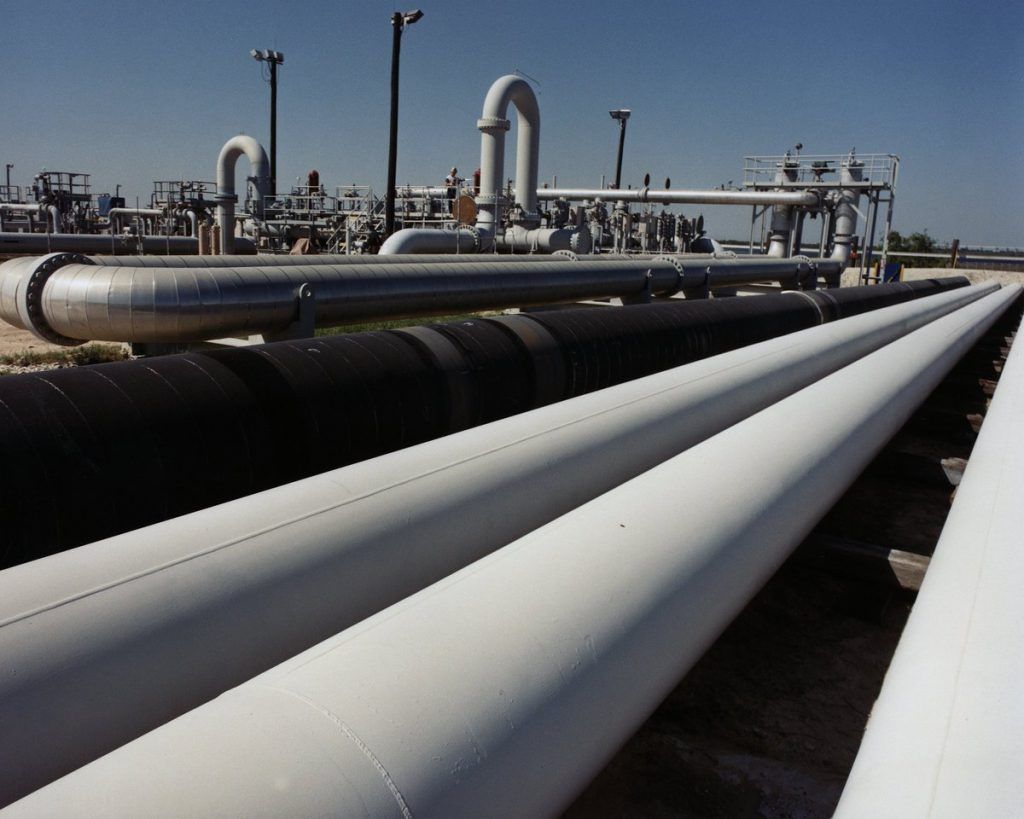Increased demand for U.S. energy exports was a key driver of U.S. foreign sales reaching an all-time high in 2022.
In fact, the United States benefited as many countries-especially in Europe-sought to replace Russia as a source of crude oil and natural gas supply.
U.S. real exports of goods exceeded their pre-pandemic 2019 levels by 2.6%, according to information from that nation’s President’s Office.
U.S. Exports of Liquefied Natural Gas, 2021 and 2022
U.S. exports in the broad end-use category of industrial supplies and materials-which includes energy goods-reached an all-time high in 2022, as did exports of consumer goods.
In contrast to imports of consumer goods, the increase in real exports of consumer goods was driven by pharmaceutical goods.
Energy exports
The fallout from Russia‘s invasion of Ukraine had a significant impact on global commodity markets in 2022 that was reflected in U.S. exports.
Unlike other traded goods, commodities such as oil-as well as many metals, minerals, and agricultural products-are relatively standardized among source countries, allowing buyers to substitute them fairly easily.
As a result, their price in a given country is largely determined by global market movements.
Thus, although Russia and Ukraine are relatively small trading partners for the United States – accounting for only 0.5% of U.S. exports and 1.1% of U.S. imports in 2021 – being major producers and exporters of key raw materials, shocks to their exports influence the prices U.S. consumers have to pay for food and fuel, as well as overall inflation.
In addition, since the United States is an exporter of some commodities that Russia and Ukraine also export, particularly energy and agricultural products, supply disruptions or changes in the pattern of exports from these countries can affect U.S. exports as well.
Inflation
Initially, the Russian invasion largely isolated Ukraine -a major exporter of food products, especially wheat, corn and vegetable oil- from world markets, threatening global food security.
According to the White House, the loss of Ukrainian exports, coupled with the reluctance of global buyers to work with Russian exporters on grain and oilseed exports and Russia’s own restrictions on the export of fertilizer and other agricultural products, led to a contraction in major supply lines for staple foods and agricultural inputs such as fuel and fertilizer, sending prices soaring in the immediate aftermath of the invasion.
Prices receded as allied nations successfully collaborated to mitigate the disruptions.
However, uncertainty associated with Russia’s domestic actions and aggression toward Ukraine-including the destruction of infrastructure used to store and export staple foods, and the naval blockade of the Ukrainian Black Sea trade route-continued to exacerbate the price rise.
![]()

